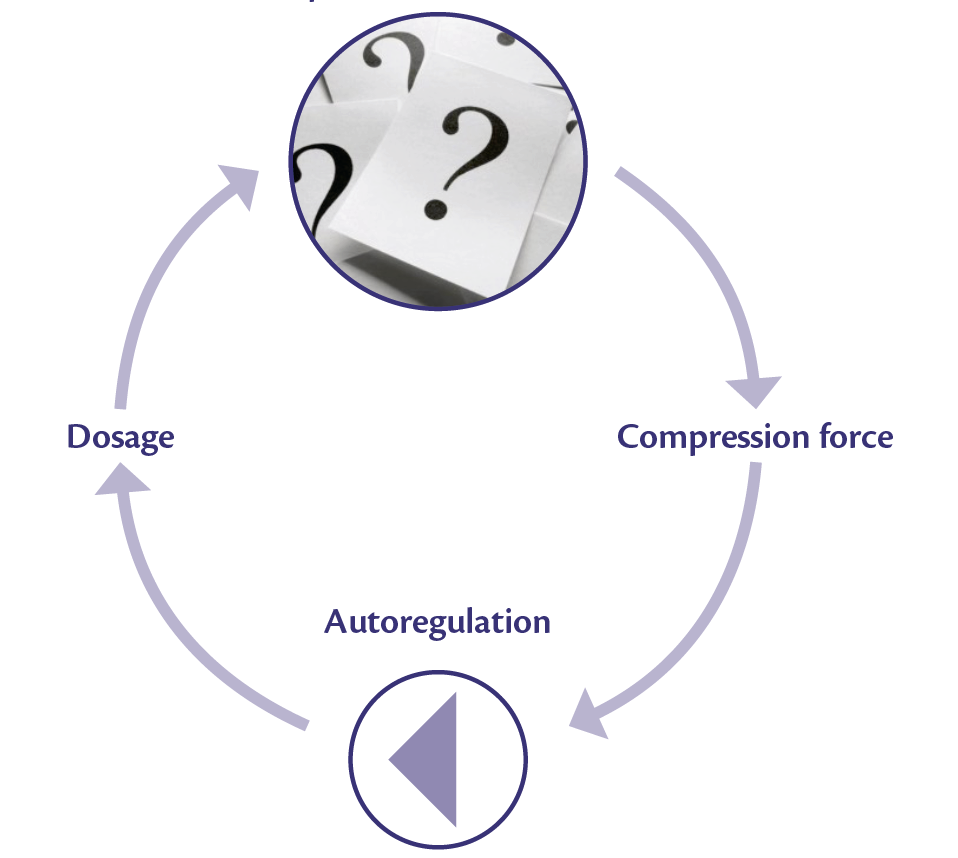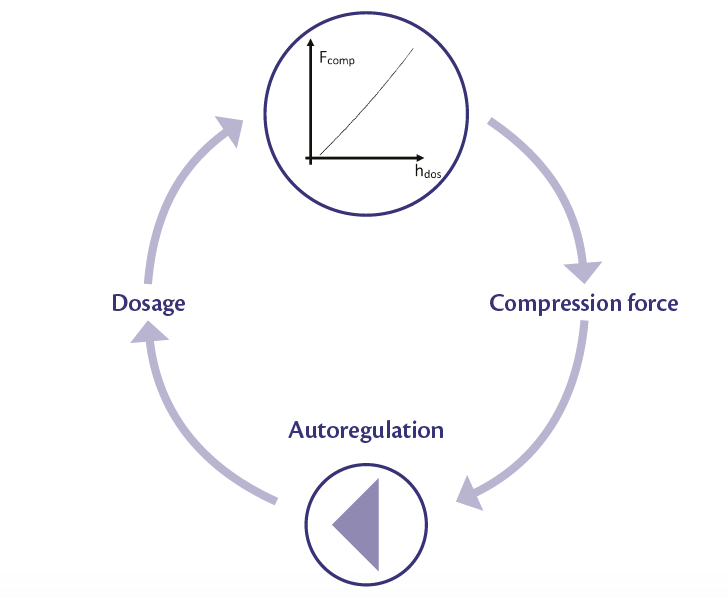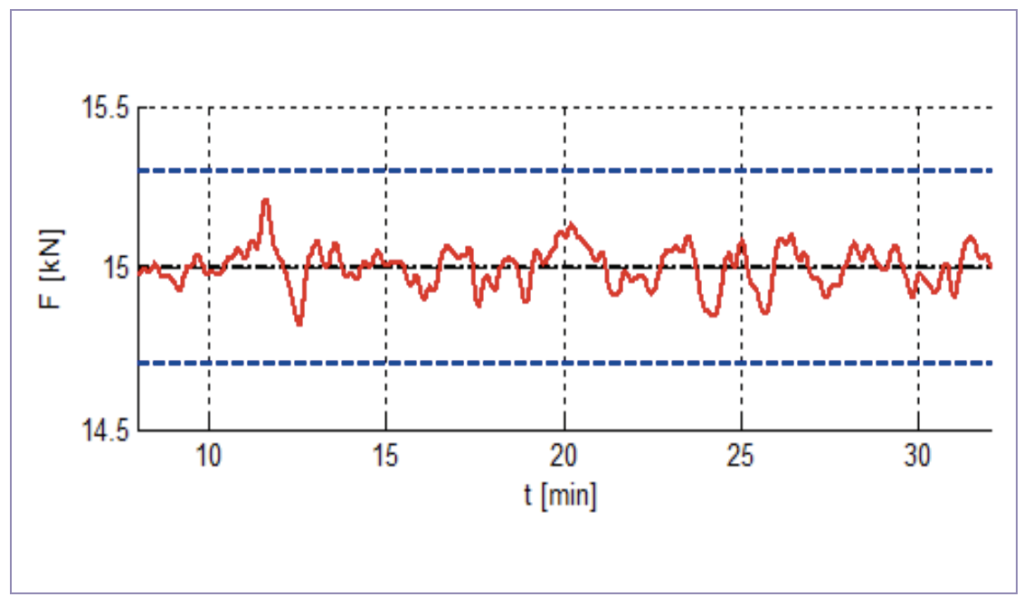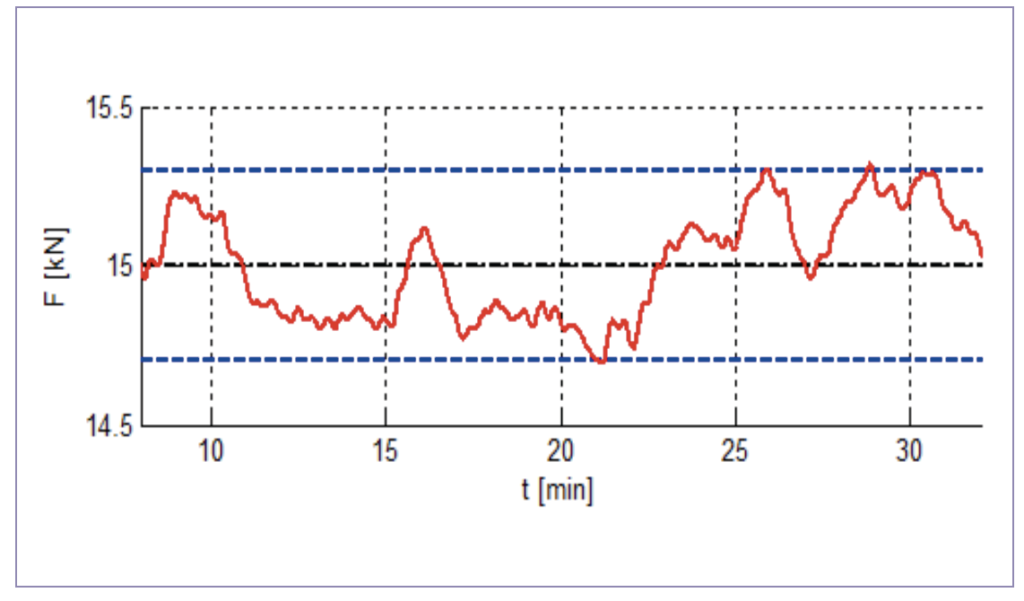
Autoregulation function on Domina tablet press
|
|
1. The context: complex set-ups due to the many parameters at play
Modern rotary tablet presses are capable of generating high throughput with excellent product quality and stability, and rapid outfitting when switching from one production run to another. However, reaching these objectives is a complex challenge: the tablet’s weight, hardness and other characteristics depend on a number of settings that the tablet press offers (feeding, dosing, compression, etc.), which must be set according to the required product and production speed, in addition to external factors such as temperature and humidity. These settings sometimes need changing when starting production runs with already tested recipes, let alone when testing new formulations. The skills and experience of the technician setting up the machine are fundamental for guaranteeing good tablet press operation.
Within such a complex context, introducing machine learning algorithms into the machine software can simplify the operator’s task, speed up going into production and improve product quality.
2. The idea: knowledge of processes in order to improve machine set-up
To calibrate a machine effectively, a good technician must work knowing what outcome will be achieved with any particular set-up. He or she must therefore have a “mental model” of what is happening in the machine. The more this mental model faithfully describes what actually happens, the more he or she will be able to set up the machine quickly and well. However, if the machine is entrusted to an inexperienced operator, i.e. one who has not built-up a good mental model of the process happening in the machine, then he or she can only proceed by trials and errors, wasting a lot of time and perhaps never finding a good solution.
3. The application: machine learning to automate machine set-up
Properly training a technician takes considerable time and investment for companies. However, if the machine was already programmed with some of the knowledge needed to make it run, the operator would need less knowledge and could learn how to use the machine more quickly. The key lies in shifting knowledge about the process model from the technician to the machine, so that the tablet press itself can make the right choices and set itself up in accordance with its present situation: this can be done by applying machine learning techniques. Machine learning is a form of artificial intelligence that uses algorithms to create models capable of making predictions or decisions starting from data collected during tests on a system. Classic examples of machine learning analyse data in a purely mathematical way, trying to find models and relationships between them without considering the nature of the phenomenon in question. They do not try to find a model that analytically expresses the reality of what is happening, but only something that works in predicting outcomes. This approach can be used to tackle an array of issues, even highly complex ones, but it requires very large databases and high computational power as well as extensive testing to verify that the algorithm can make the right choices and correct itself by learning from its mistakes.

 |
 |
| Figure 1: autoregulation diagram. | Figure 2: autoregulation with knowledge of product characteristic. |
However, by exploiting the knowledge of the physical phenomena being observed it is possible to limit the field searched by machine learning algorithms to only the parameters that best represent the phenomenon according to a previously set model, chosen from those described in the scientific literature.
At IMA Active we have chosen to follow this route to introduce an automatic calibration autoregulation function on the new Domina tablet press. The autoregulation mechanism keeps the weight of the tablets stable: by measuring the force required for compression, it detects any weight deviations and tries to correct them by adjusting the dosage. To understand the entity of the correction to be applied, it is essential to know the physical relationship in the machine between the dosage and the compression force.
An experienced technician can achieve this relationship during production set-up and then parameterise the autoregulation correctly. However, to someone with less experience, the parameters required to make this essential functionality work properly may seem mysterious and incomprehensible. On the other hand, the machine control software knows exactly what autoregulation is for, what it influences and what outcomes can be expected by its implementation. It is therefore best placed to identify the relationship existing at a given moment between dosage and compression force. Using machine learning helps identify the characteristic compression curve for the product being used. Based on this information, the autoregulation needed to rapidly and precisely correct weight deviations can be set.
Figure 3: compression force during a production run with autoregulation set by the operator.

Figure 4: compression force during a production run with autoregulation set by machine learning.
4. The outcome: simpler machine start-up and more stable production
Applying machine learning to autoregulation considerably simplifies the tablet press set-up, in terms of both time and outcomes: the technician has fewer parameters to set before starting production, thereby automatically setting a calibration that is not empirical but “physically sensible” and optimal, capable of improving production stability.
5. The future: increasingly smart and simple machines
The project outlined in this article is just one example of the work the IMA Active division is exploring in the application of machine learning to its machines. The challenge of offering customers products that not only feature increasingly complex functionalities but are also simpler to use can be overcome solely by giving the machine the necessary knowledge to carry out more tasks autonomously. There is a wealth of possibilities to be explored in this new field and we can be certain that over the coming years developments made in machine learning will completely change the human-machine relationship, giving a whole new meaning to the concept of automation, which IMA is already beginning to write.
Paper Sections:
1. The context: complex set-ups due to the many parameters at play
2. The idea: knowledge of processes in order to improve machine set-up
3. The application: machine learning to automate machine set-up
4. The outcome: simpler machine start-up and more stable production
5. The future: increasingly smart and simple machines
Last Submitted Papers:
- The potential of Croma continuous coater.
- How to step-up metformin tablets production from a pilot scale coater to three different industrial scale equipment.
- How to enhance tableting production with a paracetamol based formulation.
- Metformin manufacturing: scale-up from middle-size to large-size rotary tablet press.
- The Prexima challenge. Comparison of rotary tablet presses seminar in Leverkusen (Germany), 2-4 July 2019.
- How to perform a good scale-up
- Development of an automated multi-stage continuous reactive crystallization system with inline PATs for high viscosity process
- Prexima 300. Determination of the effect of the pre-compression force on the tablet hardness, obtained at constant value of the main compression force
- FMECA Risk Analysis background for calibrated containment solutions

